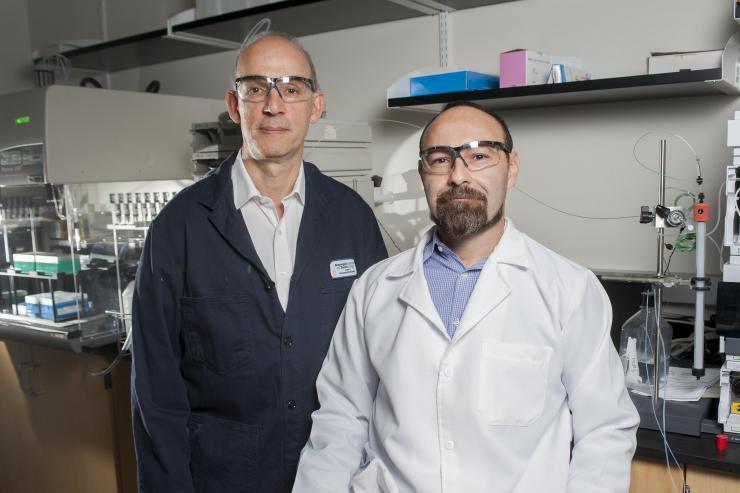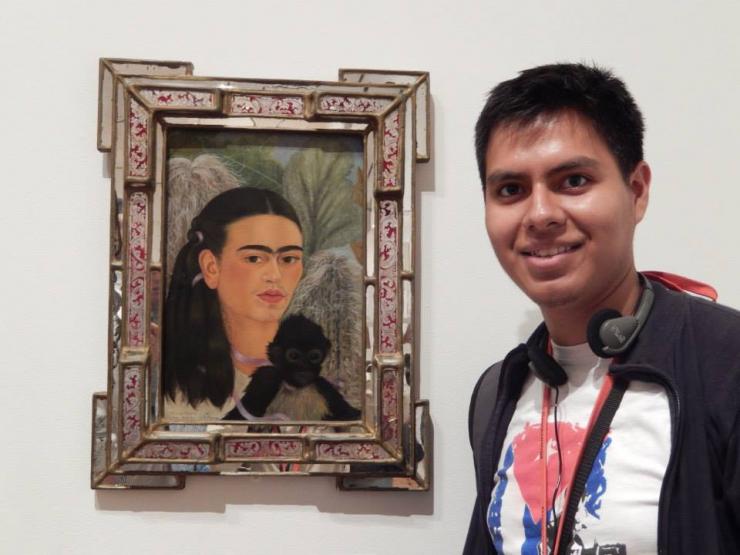Toward A Vaccine for an Ancient Scourge: Episode 3, Starring M.G. Finn
Sep 03, 2018 — Atlanta, GA

Georgia Tech chemistry and life sciences researcher M. G. Finn (l.) and UFMG parasitology and immunology researcher Alexandre Marques (r.) in Finn's lab at Georgia Tech. Their team has developed an experimental vaccine against Leishmania parasites. Credit: Georgia Tech / Christopher Moore
Episode 3 of ScienceMatters' Season 1 stars M.G. Finn. Listen to the podcast and read the transcript here!
Leishmaniasis is a scary parasitic disease; it can rot flesh. Formerly contained in countries near the equator, it has arrived in North America. School of Chemistry and Biochemistry Professor and Chair M.G. Finn explains why it’s so tough to fight this disease. His collaboration with Brazilian researcher Alexandre Marques has raised hopes for a possible vaccine.
Follow the the researchers' journey at sciencematters.gatech.edu.
Enter to win a prize by answering the episode's question:
What sugar molecule mentioned in Episode 3 is the main reason surgeons can’t transplant organs from animals into humans?
Submit your entry by noon on Friday, Sept. 7, at sciencematters.gatech.edu. Answer and winner will be announced on Monday, Sept. 10.
Results of Episode 2 Quiz
Q: What small four-legged animals mentioned in Episode 2 help Jenny McGuire collect bones from Natural Trap Cave?
A: Wood rats, pack rats, or rats
The winner is Pedro Marquez Zacarias. He was listening to ScienceMatters while doing routine data analysis for his research.
A third-year Ph.D. student in the Georgia Tech Quantitative Biosciences Graduate Program, Marquez Zacarias aims to add to the understanding of how biological complexity evolved, particularly multicellularity.
Marquez Zacarias comes from a small town in rural México, an indigenous community called Urapicho, in the state of Michoacán.

A. Maureen Rouhi, Ph.D.
Director of Communications
College of Sciences




